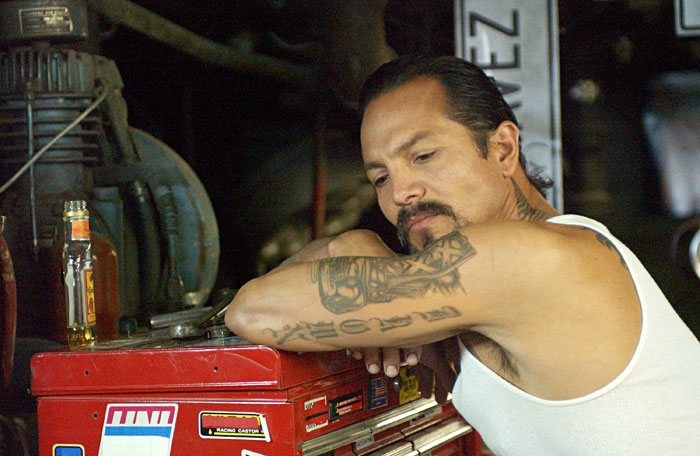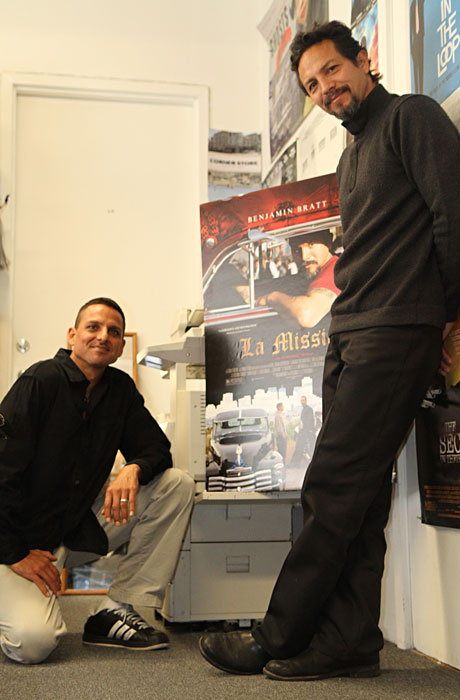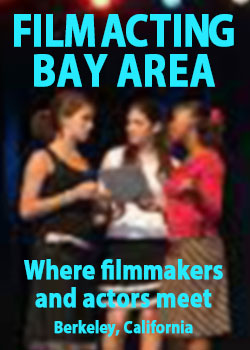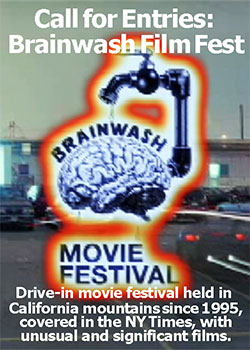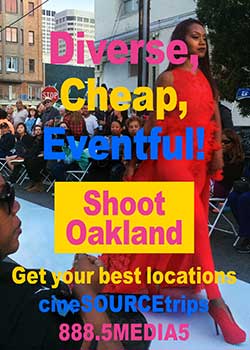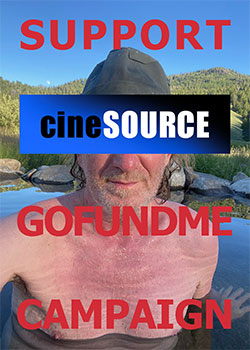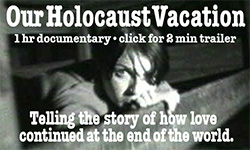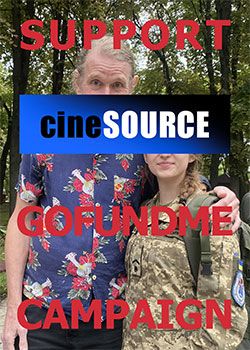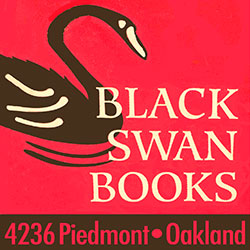The Bratt Brothers’ Mission to Make La Mission in the Mission
by Doniphan Blair
Benjamin and Peter Bratt grew up on the tougher side of San Francisco's Mission district, but in the embrace of a close family of six helmed by their mom, Eldy. A Peruvian Indian, Eldy immigrated to the United States at fourteen, where she became a nurse and also an activist. Indeed, she brought Benjamin and Peter, when they were around seven and eight, to Alcatraz to witness the American Indian Movement "re-occupation" in 1969.
By then, the Mission was sparkling with the sounds of Santana, the art of dozens of muralists, and sustainable 60s projects, like the Rainbow Grocery. Although they undoubtedly ran with a wild crowd, Peter and Benjamin were also attentive to family and school. Benjamin excelled at Lowell, San Francisco's grand old high school, notably in drama. After getting a BFA at Santa Barbara, he returned to San Francisco to take an MFA at the American Conservatory Theater and was soon plying his skills in Hollywood.
Benjamin's breakout role was Detective Rey Curtis on "Law and Order," which went for a year in 1990, for four more in 1995, and started again last year. He began appearing in many television shows and films, including "Miss Congeniality" (2000) and "Traffic" (2000), and then as leading man in "Pinero" (2001) about the Nuyorican poet, Miguel Piñero, and "Love in the Time of Cholera" (2007). Along the way, he received numerous awards, including an Emmy for "Law and Order." Quite the eligible bachelor, he dated Julia Roberts for a few years until breaking up shortly after the 2001 Oscars.
Later that year, Benjamin met the talented Talisa Soto, on the set of "Piñero," which led to starting a family. Coincidentally, he was already exploring familial themes, returning to the narratives of his youth, absent father and complex San Francisco identity in "La Mission," a feature by his brother.
Peter graduated in writing at Santa Cruz but also turned to film, making a notable writer/director debut with "Follow Me Home" in 1996. It concerns a motley band of Mission artists - Benjamin plays one - on a quest to paint a mural on the White House. Although it took awards at the SF International Film Festival and Sundance, no studio acquired it but the African-American attorney Henri Norris founded New Millennia Films to distribute it, and it continues to show, often in schools. A recipient of a 2000 Rockefeller Foundation Fellowship, a San Francisco Film Commissioner, and an ongoing Mission activist, Peter wrote, directed and produced "La Mission."
They started the project in 1995 but, despite Benjamin's Hollywood access, response was limited. The moguls of moviedom wanted to sculpt the story - which concerns Che, a stylish but macho man of the Mission dealing with his beloved only son coming out - to more salable stereotypes. This made the Bratts both nuts and determined to raise the 2.4 million budget themselves, which is what they did, Alpita Patel joining as the third producer, after Benjamin. And they did a marvelous job, while also hewing to their activist traditions with a "green" set, internships, and community outreach.
"La Mission" is great character study by Benjamin of Che but its also a masterful story by Peter of Che's turmoil, his need for dignity, as he sees it, and for love. The balance becomes untenable after Che discovers his son, played by Jeremy Ray Valdez, is gay. In the Mission, with gangbangers one side and his neighbors watching from the other, including the sharp and lovely Erika Alexander, and the gays and liberals in the nearby hills, it's a train wreck.
But the crash comes in unexpected ways, working through the issues, in a slow human meander. The shooting of the son or the Aztec street ritual would feel glued on if not the inevitable result of the themes and characters.
The Mission is also lovingly portrayed thru Che's homies, their dedication to building and cruising lowriders - slowly, and the murals and music. Although a tad too many music cues for my taste, a lot of it is Peruvian-tinged, which I love, and evokes the bittersweetness of Che's struggle as well as the Bratt's heritage. The scenes in the Castro, next door to the Mission, also ring true.
"La Mission" was shot in 2008 with a mix of working actors, like Jesse Borrego, Joe Hakik, and Benjamin's wife, Talisa, as well as Valdez and Alexander, and first timers. The Bratts also assembled a stellar local crew: cinematographer Hiro Narita, designer Keith Neely, and editor Stan Webb. It premiered the SF International Film Festival in 2009, played Sundance this year, and opened to acclaim across the country in April. We met with the brothers one cool morning at Larsen and Associates, their publicist, South of Market.
CineSource: I would like to focus on your thoughts on how to create a more vibrant Bay Area film community. How should we see ourselves: Are we a northern suburb of LA or a unique avant-garde workshop of multicultures and multi-incomes?
Peter Bratt: We were born and raised in San Francisco and share the view that San Francisco has something very unique to express. There is a rich cultural mix that you don't find anywhere else. Mixed with the progressive political scene, that makes for a very interesting geography.
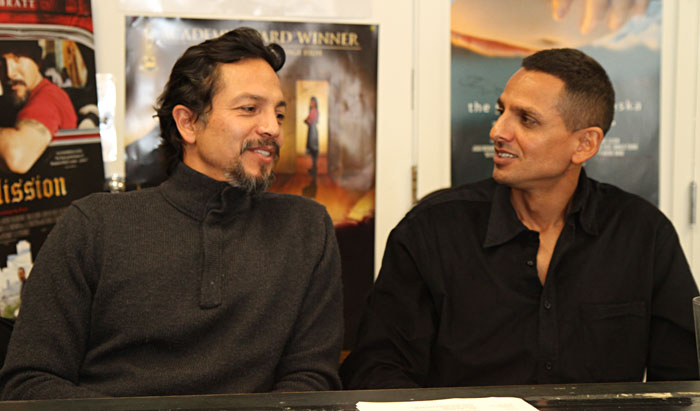 With Benjamin a Hollywood Star, and Peter, a cinema auteur and activist, they have the best of both worlds and stand by their convictions: hiring locals, having a green set, and consulting on the details of their script with the gay and Latino communities. photo: CineSource
With Benjamin a Hollywood Star, and Peter, a cinema auteur and activist, they have the best of both worlds and stand by their convictions: hiring locals, having a green set, and consulting on the details of their script with the gay and Latino communities. photo: CineSource
That said - from my limited experience working in the film medium and having collaborated with filmmakers from other parts of the country - what I find unique to the Bay Area is the people who have put a stake in the ground, [who] made what is often times a difficult choice to remain here, to maintain not just a life within the medium but a rich life in general.
There are trade-offs. There is not as much work as you find in LA or New York. People have to be a little more resourceful - they have to hustle a little more. But I find that the relationships people have with one another in the film medium are deeper and richer, there is a greater nurturing. People are willing to lend a hand more, which is why I live here.
Benjamin Bratt: For me, it is a question. The cooperative process we went through filming 'La Mission' here in San Francisco is very different from the one I typically experience down in Hollywood or in New York. There is a kind of camaraderie that emerges from a smaller film community. As Peter says: To put a stake in the ground as an artist, as a craftsperson, as a technician in the film business, to purposefully choose to live here - as opposed to where most of the work is - speaks to the importance of quality of life. A lot of people are so obsessed with work they forget the important things that, at the end of your life, have the most meanings - which are relationships.
What I was struck by is that almost everyone we came across, whether it was people we worked with up at Skywalker Ranch, or Aggie Rogers, the costume designer, or Hiro Narita, our cinematographer, or Keith Neely, our production designer, were willing to give completely of themselves. They're artisans at the top of their games but they're also incredible human beings who really see [making a movie] for what it is, which is the ultimate collaboration, especially for us with our limited financial means and relative inexperience.
There is a kind of nurturing vibe I found completely refreshing and inspiring. If we could really pull it off - now that we have based our very small production company, 5 Stick Films, here in San Francisco - I would love to return to the city and only focus on films of this nature, meaning smaller budgets, intimate, in terms of subject matter, and working with people who we would do it all over again with. It was a pretty special experience.
Peter: What I have found is that, in most people - not just the film world - most people function under the concept of scarcity. People hold their resources. I might know someone who is really talented and could help you, but I'm not going to share it, because there is not that much out there and I am going to keep it to myself.
What is really remarkable about the Bay Area, people operate more from the place of abundance. 'Oh you need this? Talk to this person.' That spirit is alive and well in San Francisco. That's why it draws so many independent and documentary film people.
I am happy to know there is a growing film youth movement that is being nurtured by the "veteranos" of filmmaking. They're taking the young filmmakers under their wing and sharing life lessons and resources.
Benjamin: A good example of what we are talking about is our editor Stan Webb, who actually lives on the outskirts of the Mission. He opened his home, not just as an editing bay - we were interacting with his family. The experience becomes more then just a technical process, it becomes deeply personal. You don't necessarily find that in other film communities. It spoils you.
Peter: But you got to have big fish to feed the smaller fish in the pond. We need to find ways to lure productions to the City. Those bigger productions create so many opportunities for smaller projects like youth projects, internships. It keeps a lot of the post facilities alive.
Sadly, with the economic downturn, it has not been great times for independent cinema or low-budget filmmaking. It has driven some really, really talented people in the Bay Area to move to where there is work. But I think that speaks to how we need to lure bigger productions and nurture the smaller filmmakers, the indie filmmakers, the youth filmmakers.
Benjamin: The civic leaders are aware of the need to draw bigger budget projects here. Peter sits on the Film Commission, and that is one of their charges: to devise a way to lure more projections here. Work has dropped off considerably, so more tax incentives are being explored. Other states have set up remarkable examples.
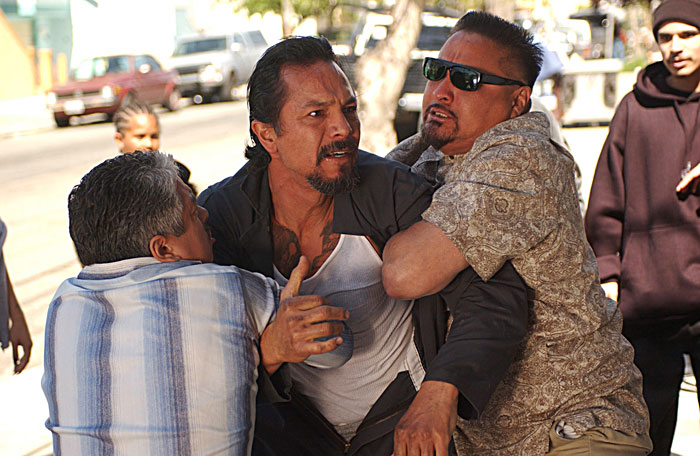 Che is pulled back from hitting his son, who he just found out is gay. Long discussed in the dominant community, this issue has yet to be aired adequately in communities of color, who need their own interpretations, icons and art to process it. photo: Five Stick Films The fact of the matter is, we seriously considered shooting 'La Mission,' about the Mission district of our hometown, in Albuquerque, New Mexico! Their incentive program is incredible. They actually offer an interest free loan, up to 15 million - your entire budget if you need it! - as long as you have a distribution deal. That's a remarkable draw for any struggling filmmaker.
Che is pulled back from hitting his son, who he just found out is gay. Long discussed in the dominant community, this issue has yet to be aired adequately in communities of color, who need their own interpretations, icons and art to process it. photo: Five Stick Films The fact of the matter is, we seriously considered shooting 'La Mission,' about the Mission district of our hometown, in Albuquerque, New Mexico! Their incentive program is incredible. They actually offer an interest free loan, up to 15 million - your entire budget if you need it! - as long as you have a distribution deal. That's a remarkable draw for any struggling filmmaker.
Of course, ours was a story very specific to this city, so we couldn't do that. Those are the kinds of things that need to be considered if, in fact, that kind of work is going to be present here.
Peter: One of San Francisco's greatest blessings is also one of its drawbacks. It's so progressive, a lot of the supervisors for the districts really advocate for the residents in those neighborhoods. Sometimes there is the perception, 'Here comes the big corporation studios making films. They are really creating more of nuisance for our residents then anything else.' Sometimes, the attitude within government is not so friendly.
What is paramount to realize, is that those bigger productions really do nurture the smaller infrastructures that evolve and develop around the entire Bay Area film community. We saw something like that on a much smaller scale. We were a little over two million dollars - a low-budget film - but we were able to offer internships and cast actors from the neighborhood, first-time actors. We worked with several youth media groups shooting behind the scenes.
Benjamin: We hired local people behind the camera as well.
Peter: Not only created job opportunities but inspired the process. Filmmaking is an inspiring art form. Get anyone on the set for the first time, you're going to see lights, you are going to see inspiration. We have seen several young people from the Mission community say, 'I am going to become a filmmaker!' One of the kids, a first time actor, he enrolled in City College and just finished his first script. He wrote it, he is going to star in it, and he is going to direct it. Just having been on the set and having a speaking role - that set the spark. Maybe he will be one of our future great filmmakers.
You need that seed planted to see the fruit down the line. That happens when you have bigger productions come and stage their craft right in the heart of the city.
It seems we have a couple of double whammies. You mentioned the progressive thing, that is an interesting take. I often see the too-pretty-city problem. San Francisco is so iconic, it is only suitable for Hitchcock or a few high romantic -
Benjamin: Or Rice-A-Roni commercials.
Right. Obviously, your story is set here, but those that are not will go to Albuquerque. Your original point was that the community is the most important thing that can offset those negatives. Is that what we should focus on?
Peter: To your point, San Francisco is often used as a backdrop - you know the cable cars, Coit Tower, Golden Gate Bridge. It is not really seen for what it is. This city built up from a lot of culturally specific neighborhoods, each one having its own flavor, and sometimes being worlds apart.
Maybe that is what we should focus on: the drama between elements?
Peter: Yes. New York has established itself well. It is used iconically for its backdrop - the Empire State Building, the famous bridges - but it is equally know for its beautiful, vibrant and -
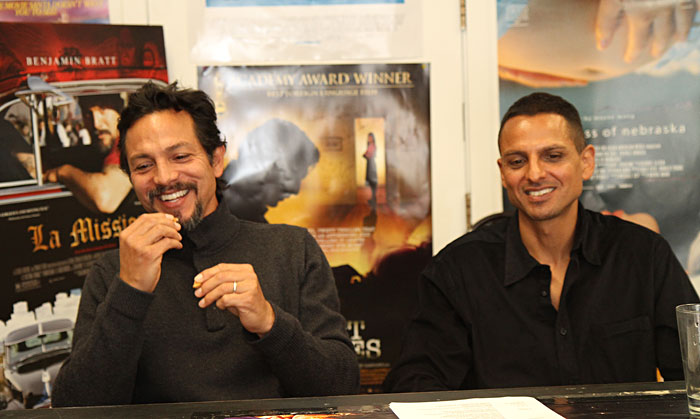 The Bratt Brothers are quite different – front camera/behind, writer/hunk, Hollywood/SF – but they also compliment each other and complete each other’s sentences. With their shared values of activism and artistry, they obviously have good time working together. photo: CineSource Benjamin: Culturally diverse neighborhoods.
The Bratt Brothers are quite different – front camera/behind, writer/hunk, Hollywood/SF – but they also compliment each other and complete each other’s sentences. With their shared values of activism and artistry, they obviously have good time working together. photo: CineSource Benjamin: Culturally diverse neighborhoods.
Peter: Sometimes rough-around-the-edges neighborhoods: Brooklyn, Queens, Bed-Sty -
Benjamin: The Bronx!
Peter: You can name those around the world and people are familiar with them. New York is known not just for its iconic images but also its underbelly, so to speak, its complexities. That could really help San Francisco and Oakland - rich, rich terrain. If we start looking at what makes a city beautiful, what gives it its vibrancy, what draws people from around the world.
Benjamin: It is an incredibly complex issue. What you're saying is that there is a treasure trove of stories within the various diverse communities. But what it comes down to - if we are talking about those in positions to green-light projects - they either focus on stories from the dominant culture, meaning the white communities. Or they focus on stories that involve Latinos, or Asians or blacks, but are fairly stereotypical.
It is a bit of dilemma. If those in power don't see these stories as commercially viable, then they are not worth telling. Of course, we know that is inaccurate, the stories are valuable, but it always comes down to the bottom line. Until these specifically oriented stories become a success at the box office, that dynamic won't change.
There is a bit of cultural self-respect behind our process. We feel our stories are a human perspective just as valuable as anything coming out of Hollywood.
Absolutely. You guys kind of personify the difference. You [Benjamin] went to Hollywood - an incredible marketplace - it is just a question of defining the roles. This is a perfect place to shoot the smaller, iconoclastic stuff.
Peter: It is a long term process. You get people like Woody Allen, Spike Lee, Martin Scorcese - New York sons and daughters - who really love their city. And that city really nurtures and incubates young talent. There is just as much young talent here, it just needs to be nurtured a little more. If it is nurtured over the long term, it will bear fruit.
Benjamin: It's good news at the end of the day, however. Whether you are talking about someone as talented as Bob Edwards, our sound mixer out of Skywalker, and Josh Lavin, and everyone out there who gave us their support, at the end of the day, if the story is compelling, of quality and well-written, people are onboard. That is all that really separates good from bad: if it is worthy of not only telling and being a part of but ultimately watching.
Totally.
Peter: Power to the people!
Posted on May 11, 2010 - 06:38 AM
by Doniphan Blair
Benjamin and Peter Bratt grew up on the tougher side of San Francisco's Mission district, but in the embrace of a close family of six helmed by their mom, Eldy. A Peruvian Indian, Eldy immigrated to the United States at fourteen, where she became a nurse and also an activist. Indeed, she brought Benjamin and Peter, when they were around seven and eight, to Alcatraz to witness the American Indian Movement "re-occupation" in 1969.
By then, the Mission was sparkling with the sounds of Santana, the art of dozens of muralists, and sustainable 60s projects, like the Rainbow Grocery. Although they undoubtedly ran with a wild crowd, Peter and Benjamin were also attentive to family and school. Benjamin excelled at Lowell, San Francisco's grand old high school, notably in drama. After getting a BFA at Santa Barbara, he returned to San Francisco to take an MFA at the American Conservatory Theater and was soon plying his skills in Hollywood.
Benjamin's breakout role was Detective Rey Curtis on "Law and Order," which went for a year in 1990, for four more in 1995, and started again last year. He began appearing in many television shows and films, including "Miss Congeniality" (2000) and "Traffic" (2000), and then as leading man in "Pinero" (2001) about the Nuyorican poet, Miguel Piñero, and "Love in the Time of Cholera" (2007). Along the way, he received numerous awards, including an Emmy for "Law and Order." Quite the eligible bachelor, he dated Julia Roberts for a few years until breaking up shortly after the 2001 Oscars.
Later that year, Benjamin met the talented Talisa Soto, on the set of "Piñero," which led to starting a family. Coincidentally, he was already exploring familial themes, returning to the narratives of his youth, absent father and complex San Francisco identity in "La Mission," a feature by his brother.
Peter graduated in writing at Santa Cruz but also turned to film, making a notable writer/director debut with "Follow Me Home" in 1996. It concerns a motley band of Mission artists - Benjamin plays one - on a quest to paint a mural on the White House. Although it took awards at the SF International Film Festival and Sundance, no studio acquired it but the African-American attorney Henri Norris founded New Millennia Films to distribute it, and it continues to show, often in schools. A recipient of a 2000 Rockefeller Foundation Fellowship, a San Francisco Film Commissioner, and an ongoing Mission activist, Peter wrote, directed and produced "La Mission."
They started the project in 1995 but, despite Benjamin's Hollywood access, response was limited. The moguls of moviedom wanted to sculpt the story - which concerns Che, a stylish but macho man of the Mission dealing with his beloved only son coming out - to more salable stereotypes. This made the Bratts both nuts and determined to raise the 2.4 million budget themselves, which is what they did, Alpita Patel joining as the third producer, after Benjamin. And they did a marvelous job, while also hewing to their activist traditions with a "green" set, internships, and community outreach.
"La Mission" is great character study by Benjamin of Che but its also a masterful story by Peter of Che's turmoil, his need for dignity, as he sees it, and for love. The balance becomes untenable after Che discovers his son, played by Jeremy Ray Valdez, is gay. In the Mission, with gangbangers one side and his neighbors watching from the other, including the sharp and lovely Erika Alexander, and the gays and liberals in the nearby hills, it's a train wreck.
But the crash comes in unexpected ways, working through the issues, in a slow human meander. The shooting of the son or the Aztec street ritual would feel glued on if not the inevitable result of the themes and characters.
The Mission is also lovingly portrayed thru Che's homies, their dedication to building and cruising lowriders - slowly, and the murals and music. Although a tad too many music cues for my taste, a lot of it is Peruvian-tinged, which I love, and evokes the bittersweetness of Che's struggle as well as the Bratt's heritage. The scenes in the Castro, next door to the Mission, also ring true.
"La Mission" was shot in 2008 with a mix of working actors, like Jesse Borrego, Joe Hakik, and Benjamin's wife, Talisa, as well as Valdez and Alexander, and first timers. The Bratts also assembled a stellar local crew: cinematographer Hiro Narita, designer Keith Neely, and editor Stan Webb. It premiered the SF International Film Festival in 2009, played Sundance this year, and opened to acclaim across the country in April. We met with the brothers one cool morning at Larsen and Associates, their publicist, South of Market.
CineSource: I would like to focus on your thoughts on how to create a more vibrant Bay Area film community. How should we see ourselves: Are we a northern suburb of LA or a unique avant-garde workshop of multicultures and multi-incomes?
Peter Bratt: We were born and raised in San Francisco and share the view that San Francisco has something very unique to express. There is a rich cultural mix that you don't find anywhere else. Mixed with the progressive political scene, that makes for a very interesting geography.
 With Benjamin a Hollywood Star, and Peter, a cinema auteur and activist, they have the best of both worlds and stand by their convictions: hiring locals, having a green set, and consulting on the details of their script with the gay and Latino communities. photo: CineSource
With Benjamin a Hollywood Star, and Peter, a cinema auteur and activist, they have the best of both worlds and stand by their convictions: hiring locals, having a green set, and consulting on the details of their script with the gay and Latino communities. photo: CineSource That said - from my limited experience working in the film medium and having collaborated with filmmakers from other parts of the country - what I find unique to the Bay Area is the people who have put a stake in the ground, [who] made what is often times a difficult choice to remain here, to maintain not just a life within the medium but a rich life in general.
There are trade-offs. There is not as much work as you find in LA or New York. People have to be a little more resourceful - they have to hustle a little more. But I find that the relationships people have with one another in the film medium are deeper and richer, there is a greater nurturing. People are willing to lend a hand more, which is why I live here.
Benjamin Bratt: For me, it is a question. The cooperative process we went through filming 'La Mission' here in San Francisco is very different from the one I typically experience down in Hollywood or in New York. There is a kind of camaraderie that emerges from a smaller film community. As Peter says: To put a stake in the ground as an artist, as a craftsperson, as a technician in the film business, to purposefully choose to live here - as opposed to where most of the work is - speaks to the importance of quality of life. A lot of people are so obsessed with work they forget the important things that, at the end of your life, have the most meanings - which are relationships.
What I was struck by is that almost everyone we came across, whether it was people we worked with up at Skywalker Ranch, or Aggie Rogers, the costume designer, or Hiro Narita, our cinematographer, or Keith Neely, our production designer, were willing to give completely of themselves. They're artisans at the top of their games but they're also incredible human beings who really see [making a movie] for what it is, which is the ultimate collaboration, especially for us with our limited financial means and relative inexperience.
There is a kind of nurturing vibe I found completely refreshing and inspiring. If we could really pull it off - now that we have based our very small production company, 5 Stick Films, here in San Francisco - I would love to return to the city and only focus on films of this nature, meaning smaller budgets, intimate, in terms of subject matter, and working with people who we would do it all over again with. It was a pretty special experience.
Peter: What I have found is that, in most people - not just the film world - most people function under the concept of scarcity. People hold their resources. I might know someone who is really talented and could help you, but I'm not going to share it, because there is not that much out there and I am going to keep it to myself.
What is really remarkable about the Bay Area, people operate more from the place of abundance. 'Oh you need this? Talk to this person.' That spirit is alive and well in San Francisco. That's why it draws so many independent and documentary film people.
I am happy to know there is a growing film youth movement that is being nurtured by the "veteranos" of filmmaking. They're taking the young filmmakers under their wing and sharing life lessons and resources.
Benjamin: A good example of what we are talking about is our editor Stan Webb, who actually lives on the outskirts of the Mission. He opened his home, not just as an editing bay - we were interacting with his family. The experience becomes more then just a technical process, it becomes deeply personal. You don't necessarily find that in other film communities. It spoils you.
Peter: But you got to have big fish to feed the smaller fish in the pond. We need to find ways to lure productions to the City. Those bigger productions create so many opportunities for smaller projects like youth projects, internships. It keeps a lot of the post facilities alive.
Sadly, with the economic downturn, it has not been great times for independent cinema or low-budget filmmaking. It has driven some really, really talented people in the Bay Area to move to where there is work. But I think that speaks to how we need to lure bigger productions and nurture the smaller filmmakers, the indie filmmakers, the youth filmmakers.
Benjamin: The civic leaders are aware of the need to draw bigger budget projects here. Peter sits on the Film Commission, and that is one of their charges: to devise a way to lure more projections here. Work has dropped off considerably, so more tax incentives are being explored. Other states have set up remarkable examples.
 Che is pulled back from hitting his son, who he just found out is gay. Long discussed in the dominant community, this issue has yet to be aired adequately in communities of color, who need their own interpretations, icons and art to process it. photo: Five Stick Films
Che is pulled back from hitting his son, who he just found out is gay. Long discussed in the dominant community, this issue has yet to be aired adequately in communities of color, who need their own interpretations, icons and art to process it. photo: Five Stick Films Of course, ours was a story very specific to this city, so we couldn't do that. Those are the kinds of things that need to be considered if, in fact, that kind of work is going to be present here.
Peter: One of San Francisco's greatest blessings is also one of its drawbacks. It's so progressive, a lot of the supervisors for the districts really advocate for the residents in those neighborhoods. Sometimes there is the perception, 'Here comes the big corporation studios making films. They are really creating more of nuisance for our residents then anything else.' Sometimes, the attitude within government is not so friendly.
What is paramount to realize, is that those bigger productions really do nurture the smaller infrastructures that evolve and develop around the entire Bay Area film community. We saw something like that on a much smaller scale. We were a little over two million dollars - a low-budget film - but we were able to offer internships and cast actors from the neighborhood, first-time actors. We worked with several youth media groups shooting behind the scenes.
Benjamin: We hired local people behind the camera as well.
Peter: Not only created job opportunities but inspired the process. Filmmaking is an inspiring art form. Get anyone on the set for the first time, you're going to see lights, you are going to see inspiration. We have seen several young people from the Mission community say, 'I am going to become a filmmaker!' One of the kids, a first time actor, he enrolled in City College and just finished his first script. He wrote it, he is going to star in it, and he is going to direct it. Just having been on the set and having a speaking role - that set the spark. Maybe he will be one of our future great filmmakers.
You need that seed planted to see the fruit down the line. That happens when you have bigger productions come and stage their craft right in the heart of the city.
It seems we have a couple of double whammies. You mentioned the progressive thing, that is an interesting take. I often see the too-pretty-city problem. San Francisco is so iconic, it is only suitable for Hitchcock or a few high romantic -
Benjamin: Or Rice-A-Roni commercials.
Right. Obviously, your story is set here, but those that are not will go to Albuquerque. Your original point was that the community is the most important thing that can offset those negatives. Is that what we should focus on?
Peter: To your point, San Francisco is often used as a backdrop - you know the cable cars, Coit Tower, Golden Gate Bridge. It is not really seen for what it is. This city built up from a lot of culturally specific neighborhoods, each one having its own flavor, and sometimes being worlds apart.
Maybe that is what we should focus on: the drama between elements?
Peter: Yes. New York has established itself well. It is used iconically for its backdrop - the Empire State Building, the famous bridges - but it is equally know for its beautiful, vibrant and -
 The Bratt Brothers are quite different – front camera/behind, writer/hunk, Hollywood/SF – but they also compliment each other and complete each other’s sentences. With their shared values of activism and artistry, they obviously have good time working together. photo: CineSource
The Bratt Brothers are quite different – front camera/behind, writer/hunk, Hollywood/SF – but they also compliment each other and complete each other’s sentences. With their shared values of activism and artistry, they obviously have good time working together. photo: CineSource Peter: Sometimes rough-around-the-edges neighborhoods: Brooklyn, Queens, Bed-Sty -
Benjamin: The Bronx!
Peter: You can name those around the world and people are familiar with them. New York is known not just for its iconic images but also its underbelly, so to speak, its complexities. That could really help San Francisco and Oakland - rich, rich terrain. If we start looking at what makes a city beautiful, what gives it its vibrancy, what draws people from around the world.
Benjamin: It is an incredibly complex issue. What you're saying is that there is a treasure trove of stories within the various diverse communities. But what it comes down to - if we are talking about those in positions to green-light projects - they either focus on stories from the dominant culture, meaning the white communities. Or they focus on stories that involve Latinos, or Asians or blacks, but are fairly stereotypical.
It is a bit of dilemma. If those in power don't see these stories as commercially viable, then they are not worth telling. Of course, we know that is inaccurate, the stories are valuable, but it always comes down to the bottom line. Until these specifically oriented stories become a success at the box office, that dynamic won't change.
There is a bit of cultural self-respect behind our process. We feel our stories are a human perspective just as valuable as anything coming out of Hollywood.
Absolutely. You guys kind of personify the difference. You [Benjamin] went to Hollywood - an incredible marketplace - it is just a question of defining the roles. This is a perfect place to shoot the smaller, iconoclastic stuff.
Peter: It is a long term process. You get people like Woody Allen, Spike Lee, Martin Scorcese - New York sons and daughters - who really love their city. And that city really nurtures and incubates young talent. There is just as much young talent here, it just needs to be nurtured a little more. If it is nurtured over the long term, it will bear fruit.
Benjamin: It's good news at the end of the day, however. Whether you are talking about someone as talented as Bob Edwards, our sound mixer out of Skywalker, and Josh Lavin, and everyone out there who gave us their support, at the end of the day, if the story is compelling, of quality and well-written, people are onboard. That is all that really separates good from bad: if it is worthy of not only telling and being a part of but ultimately watching.
Totally.
Peter: Power to the people!
Posted on May 11, 2010 - 06:38 AM














